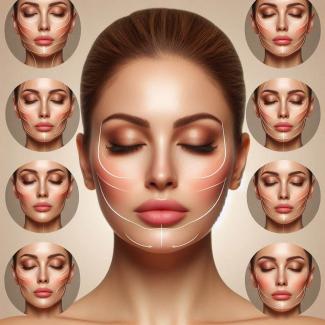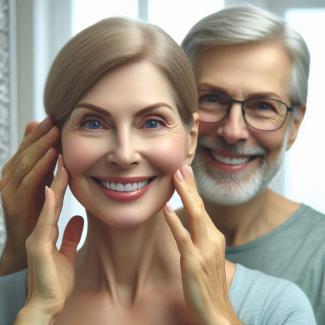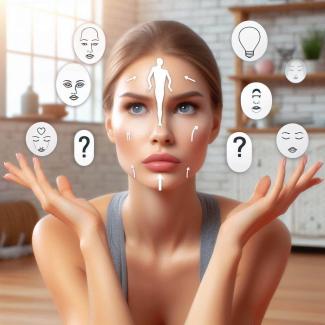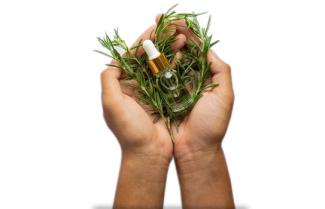
Facial exercises, also known as facial yoga or face exercises, involve specific movements and contractions of the facial muscles. The goal is to tone, strengthen, and enhance the appearance of the face. These exercises are designed to target various muscle groups within the face, which can contribute to improved muscle tone, skin elasticity, and overall facial aesthetics.
2. Benefits of Facial Exercises
A. Muscle Toning and Strengthening
Facial exercises help in toning and strengthening the muscles of the face. Just as physical exercises improve muscle tone and strength in the body, facial exercises can enhance the firmness and contour of the face by stimulating and working out the underlying muscles.
B. Improved Circulation
Performing facial exercises increases blood flow to the facial skin, which can enhance the delivery of oxygen and nutrients to the cells. This improved circulation promotes a healthy glow and can contribute to the overall vitality of the skin.
C. Skin Elasticity and Firmness
By engaging the muscles, facial exercises can support the skin's elasticity. As the muscles become stronger, they can help lift and firm the skin, potentially reducing the appearance of sagging and promoting a more youthful look.
D. Stress Relief
Facial exercises often include relaxation techniques that can reduce tension in the face. This can alleviate stress-related issues like jaw clenching and facial tension, contributing to a more relaxed and comfortable expression.
E. Reduction of Fine Lines and Wrinkles
Regular facial exercises may help diminish the appearance of fine lines and wrinkles. Strengthening the facial muscles and improving circulation can lead to smoother skin and a reduction in the depth of existing lines.
3. How to Perform Facial Exercises
A. Warm-Up
Before starting facial exercises, it's essential to warm up the muscles to avoid strain or injury. You can gently massage your face with your fingers or use a warm, damp cloth to relax the skin and prepare the muscles.
B. Facial Exercise Techniques
- Forehead Exercises
- Forehead Smoother: Place your fingers on your forehead and gently pull the skin taut. Raise your eyebrows while applying light resistance with your fingers. Hold for a few seconds and then relax. Repeat 10-15 times.
- Eyebrow Lift: Place your fingers under your eyebrows to prevent them from rising. Try to lift your eyebrows against the resistance of your fingers. Hold for a few seconds and release. Repeat 10-15 times.
- Eye Exercises
- Eye Squeeze: Close your eyes tightly and then open them wide. Repeat this motion 10-15 times to strengthen the muscles around your eyes.
- Crow’s Feet Eraser: Place your fingers at the outer corners of your eyes. Smile broadly and try to squint your eyes while pushing against the skin with your fingers. Hold for a few seconds and relax. Repeat 10-15 times.
- Cheek Exercises
- Cheek Puff: Inhale deeply and puff out your cheeks. Hold the air in your cheeks for a few seconds, then release slowly. Repeat 10-15 times.
- Cheek Lifter: Place your fingers on your cheeks and smile as widely as you can. Use your fingers to gently lift your cheeks upward. Hold for a few seconds and then relax. Repeat 10-15 times.
- Jaw and Chin Exercises
- Jaw Drop: Open your mouth as wide as possible, then close it slowly. Repeat this exercise 10-15 times to work the muscles in your jaw and chin area.
- Chin Lift: Tilt your head back and look at the ceiling. Move your lower jaw forward and hold for a few seconds before relaxing. Repeat 10-15 times.
- Neck Exercises
- Neck Stretch: Tilt your head to one side, bringing your ear toward your shoulder. Hold for 5-10 seconds, then switch to the other side. Repeat 5-10 times on each side.
- Neck Resistance: Place your hands on your forehead and gently push against them while resisting with your neck muscles. Hold for a few seconds and then relax. Repeat 10-15 times.
C. Cool Down
After performing facial exercises, it’s crucial to cool down. Gently massage your face to relax the muscles and stimulate blood flow. You can also apply a soothing moisturizer or facial oil to keep your skin hydrated.
4. How Facial Exercises Affect the Body and Health
A. Circulatory System
Facial exercises enhance blood circulation in the face, which helps deliver essential nutrients and oxygen to the skin cells. This increased blood flow can contribute to a healthier complexion and potentially accelerate skin repair processes.
B. Musculoskeletal System
By strengthening the facial muscles, facial exercises support the overall structure of the face. This muscle tone helps maintain the contours and firmness of the face, which can prevent sagging and promote a more youthful appearance.
C. Nervous System
Facial exercises can stimulate the facial nerves, which may improve facial expressions and contribute to better communication through non-verbal cues. This stimulation can also help reduce the effects of facial stress and tension.
D. Psychological Well-being
Engaging in facial exercises can have a positive impact on psychological well-being. The act of focusing on self-care and participating in a regular routine of facial exercises can contribute to a sense of relaxation and improved self-esteem.
5. How Facial Exercises Help Reduce Wrinkles
A. Strengthening Muscles
By regularly engaging the muscles in your face, you can improve muscle tone and firmness. Stronger facial muscles can help lift and support the skin, reducing the appearance of fine lines and wrinkles.
B. Enhancing Skin Elasticity
Facial exercises stimulate collagen production, which is crucial for maintaining skin elasticity. Increased collagen levels can help the skin retain its shape and bounce, reducing the depth and visibility of wrinkles.
C. Increasing Blood Flow
The improved circulation resulting from facial exercises can enhance skin health by delivering more oxygen and nutrients to the skin cells. This can promote a healthier and more resilient skin surface, which may reduce the appearance of wrinkles over time.
D. Reducing Tension
Facial exercises that target muscle relaxation can alleviate tension in areas prone to wrinkle formation, such as the forehead and around the eyes. By relaxing these muscles, you can reduce the formation of expression lines and wrinkles.
6. Best Practices for Facial Exercises
A. Consistency
For optimal results, facial exercises should be performed consistently. Aim for 5-10 minutes of facial exercises daily or several times a week. Regular practice is key to achieving and maintaining visible results.
B. Technique and Form
Ensure that you are using proper technique and form when performing facial exercises. Incorrect technique can lead to muscle strain or exacerbate existing wrinkles. Follow instructions carefully and perform each exercise with controlled movements.
C. Hydration and Nutrition
Maintain a balanced diet and stay hydrated to support overall skin health. Proper nutrition and hydration can enhance the effectiveness of facial exercises and contribute to better skin appearance.
D. Complementary Skincare Routine
Incorporate facial exercises into a comprehensive skincare routine that includes cleansing, exfoliating, and moisturizing. A well-rounded skincare regimen will complement the benefits of facial exercises and promote healthier skin.
E. Avoid Overexertion
Do not overexert yourself by performing excessive repetitions or holding positions for too long. Overuse of facial muscles can lead to muscle fatigue or strain. Listen to your body and adjust the intensity of exercises as needed.
7. Additional Considerations
A. Medical Conditions
If you have any underlying medical conditions or concerns related to your facial muscles or skin, consult with a healthcare professional before starting a new facial exercise regimen. This ensures that facial exercises are safe and suitable for your individual health needs.
B. Age-Related Changes
Keep in mind that age-related changes in skin and muscle tone are natural. While facial exercises can help improve appearance, they may not completely reverse all signs of aging. Set realistic expectations and focus on overall wellness and self-care.
C. Professional Guidance
If you are unsure about how to perform facial exercises correctly or want personalized recommendations, consider seeking guidance from a skincare professional or a facial exercise specialist. They can provide tailored advice and ensure that you are performing exercises effectively.
Facial exercises offer a range of benefits, from improved muscle tone and skin elasticity to enhanced blood flow and reduced wrinkles. By incorporating these exercises into a regular routine, you can support the overall health and appearance of your face. Remember to practice consistently, use proper technique, and complement facial exercises with a balanced skincare regimen for optimal results.






